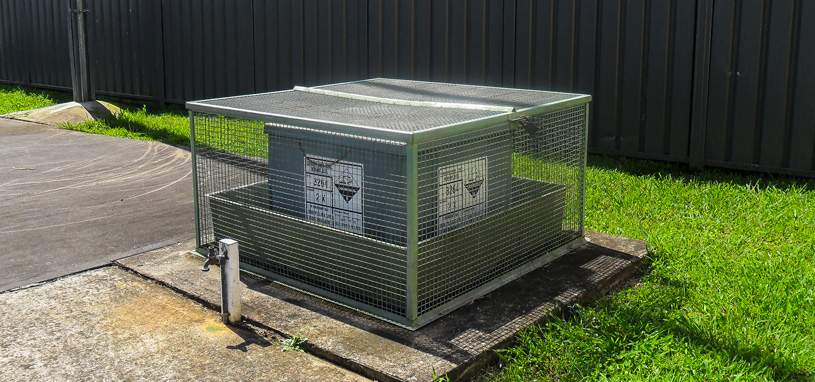A guide to choosing the right chemical dosing system for odour control
Chemical dosing systems are well proven solutions to control odours from wastewater. The aim of these systems is to prevent the release of H2S gas into the atmosphere, which is the major source of odours from wastewater streams.
However, there are a number of different chemical dosing systems available for odour control. Two of the most popular are ferrous chloride dosing and magnesium hydroxide dosing.
In this article we compare these two chemical dosing systems to help you identify which one may be best for your application.
Ferrous chloride dosing vs magnesium dosing
| Ferrous Dosing | Magnesium Hydroxide Dosing | |
|---|---|---|
|
% Odour Reduction |
|
|
|
Mechanism of Action |
|
|
|
Industries Covered |
|
|
|
Advantages |
|
|
|
Disadvantages |
|
|
Ferrous chloride dosing systems

Ferrous dosing has the highest reduction in odour of all the chemical dosing systems. The iron (Fe) reacts with sulphides in the wastewater stream to form iron sulphide, which precipitates out of solution. Because the sulphides are bound to iron atoms, they are no longer free to form H2S gas.
Ferrous dosing systems are so effective that they typically suppress sulphide concentration in wastewater to less than 1 mg/L. Therefore, odours are drastically reduced.
In most of Australia, ferrous dosing chemicals are cheaper than magnesium hydroxide. The dosing systems also require less ongoing maintenance. Ferrous dosing chemicals do not tend to clog up and block dosing lines or injection points.
For this reason, they are also suited for use with pressurised wastewater systems.
When is ferrous dosing not the best solution?
However, there are some circumstances where ferrous dosing is not the most suitable solution. For example, when the wastewater is turbulent, H2S gas will be released due to the remaining sulphides in solution. Even though the concentration is very low, an odour will still be noticeable to humans.
Another circumstance where Ferrous dosing may not be suitable is in applications with a low pH – the ferrous chloride reaction is not as effective in low pH wastewater, leading to a higher concentration of sulphides in solution and a higher probability for H2S release.
It is also important to note that Ferrous Chloride is classified as a hazardous material. Cleanawater dosing systems are fully compliant with the requirements for hazardous materials. However, caution must still be exercised when using ferrous chloride and the correct PPE must be available at all times.
Magnesium hydroxide dosing systems

Magnesium Hydroxide dosing systems work by keeping sulphides in solution in the wastewater stream. At a pH higher than 8.5, sulphides tend to remain in solution as HS rather than forming H2S which is released to the atmosphere. Magnesium Hydroxide raises the pH of wastewater above 8.5, thus preventing the release of H2S gas and odours.
Magnesium hydroxide's supression of sulphide volatility makes it well suited to controlling H2S odours associated with turbulent flow conditions.
What are the disadvantages of magnesium hydroxide?
The main disadvantage of magnesium hydroxide is its tendency to clog up causing blockages in the chemical dosing system. Tank mixers and regular flushing of dosing lines can mitigate this problem. However, a systematic and thorough maintenance program is essential for magnesium hydroxide dosing units to retain their effectiveness.
It is not advisable to use magnesium hydroxide dosing when injecting into high-pressure wastewater systems, the back pressure will likely contribute to clogging and blockages in the system.
A project at MidCoast Water in New South Wales led to trials of magnesium hydroxide dosing. The results showed a marked reduction in H2S concentration and odours.
Contact Cleanawater for more information about chemical dosing systems for wastewater
Cleanawater has extensive experience in both ferrous and magnesium hydroxide dosing systems. Our successful track record in wastewater odour treatment gives us a great platform to help you identify the problems in your system. Cleanawater technical experts can evaluate your odour performance and your wastewater system design to recommend the most effective chemical dosing system for your needs.
Find out more about our chemical dosing systems for trade waste or call our expert team on 1800 353 788 today to arrange a consultation.
Must Read
What to Expect During a Modular Wash Bay Installation
CleanaWater, we make the process of installing a modular wash bay on your site as smooth and straightforward as possible. ...
Read moreThe CleanaWater Team Driving Water Treatment and Sustainability
CleanaWater is powered by a dedicated team of professionals who bring expertise and passion to every project. ...
Read more